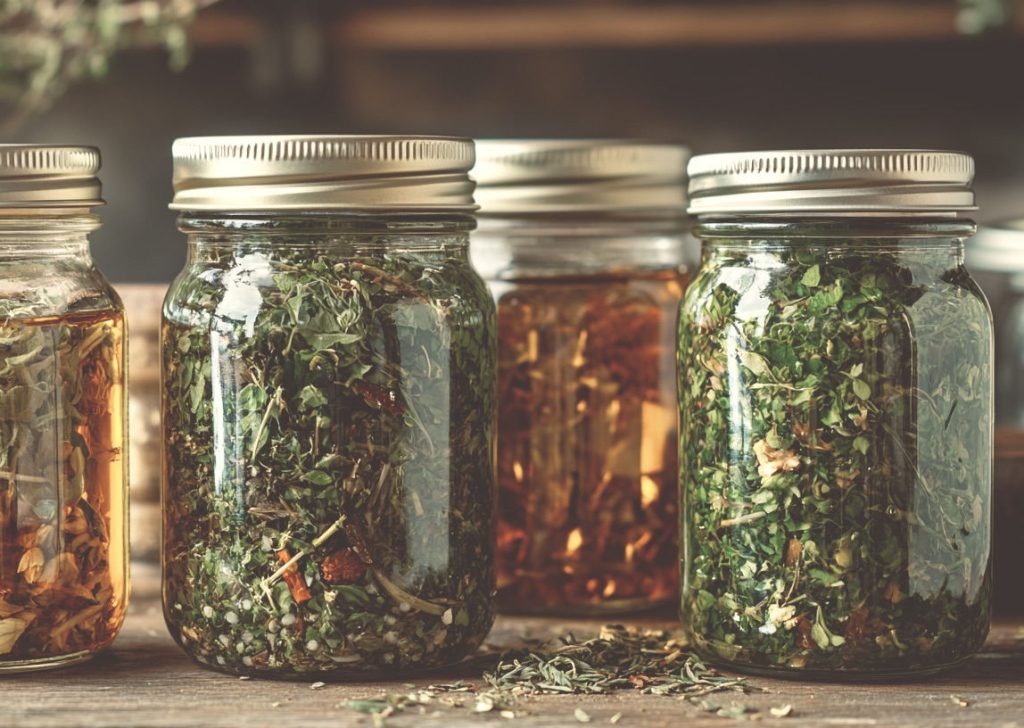A herb-infused oil is chopped up medicinal plant material steeped in a chosen oil for some time, 4-6 weeks, and then strained through a muslin cloth, with the plant material being disposed of. What is left is an oil which has absorbed lots of medicinal properties from the plant(s) and can be used for cooking, skincare, body care, and emotional and spiritual care depending on which herb(s) have been infused.
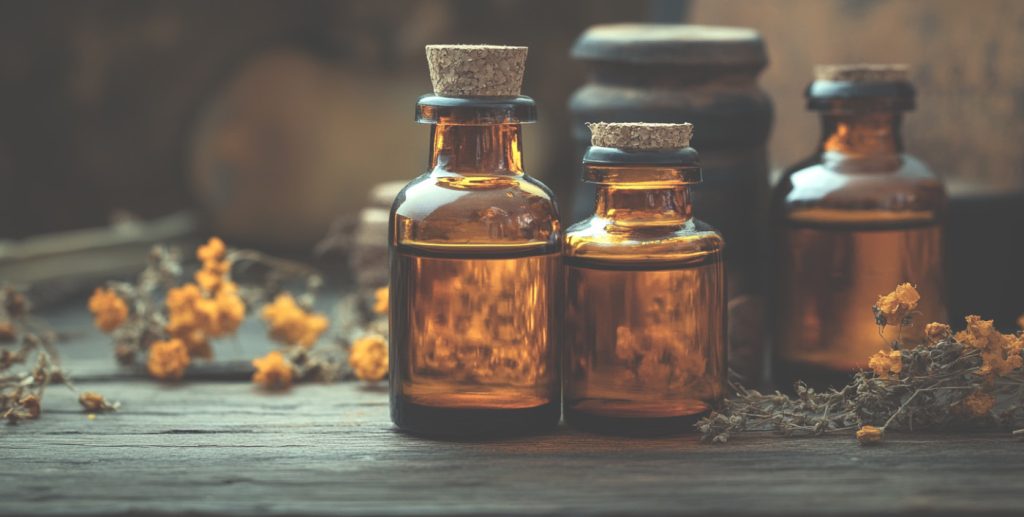
Important to mention is I’m NOT talking about Essential oils. They are different to herb-infused oils and should never be used interchangeably.
There are many theories and ways to go about when preparing herb-infused oils. As long as you are happy with the result of your herbal oil I believe your way is the right way for you. Below I have given directions for how I make my herbal oils which have the perfect potency, aroma, and taste for my liking.
Step-by-Step instructions
1. Be well prepared and ready with clean, sterilised and dry surfaces to work on, and tools including a jar with a lid, a stick to stir with, and a knife or a blender.
2. Blend or chop your herbs finely and place them in your jar, about 3/4 full. I mainly use dried herbs (with the exception of St. Johns wort (Hypericum perforatum)) as many fresh herbs have high water content which increases the risk of your infusion turning rancid or growing mould.
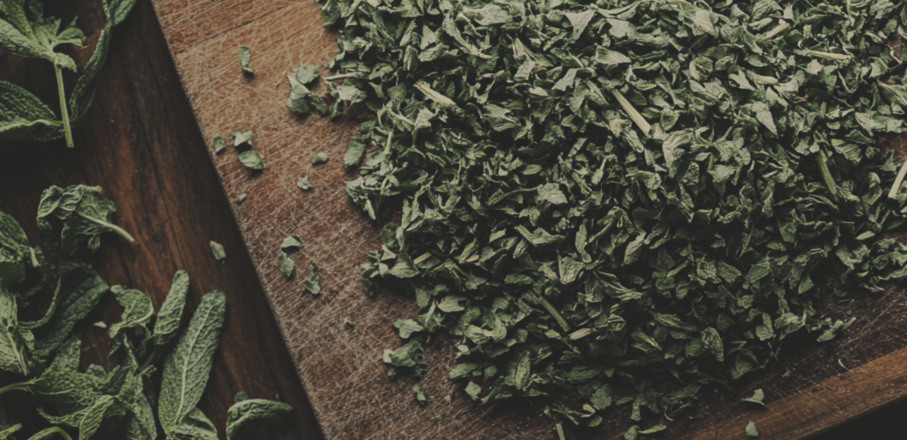
3. Fill the remaining space in the jar with your chosen oil. Olive oil is a good choice for both internal and external use. Make sure all plant material is submerged in the oil and that the jar is filled to the brim. You will need a stick of some sort to stir in the oil to ensure all herbs are covered and no oxygen remains in the jar. When no herbs or air bubbles emerge above the surface you’ve done it right!
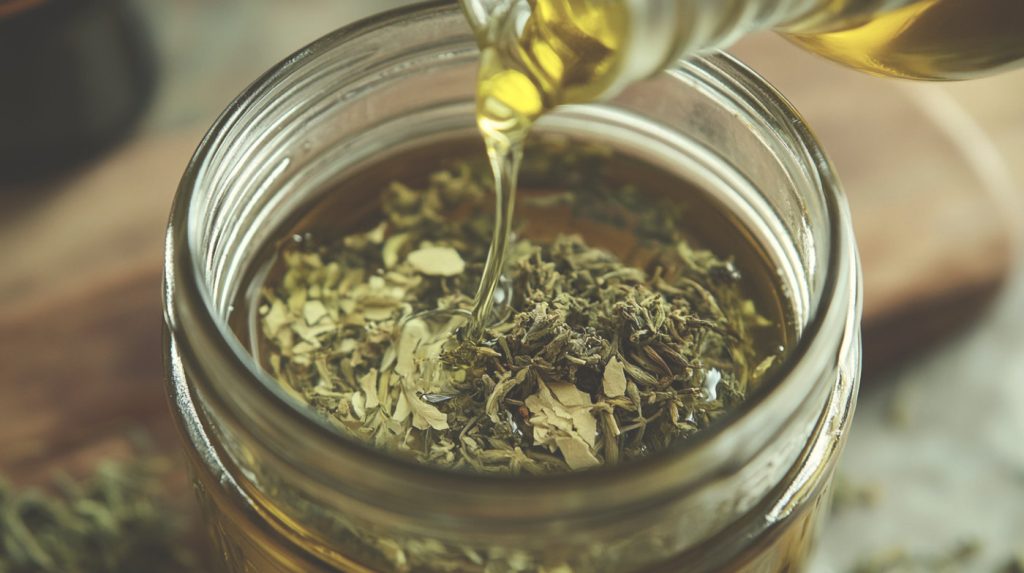
4. Cap the jar tightly and make sure to label it with the date and herbs and oil used. Place your jar somewhere away from light and heat as it can degrade the quality of the oil. Giving the plants time to infuse their medicinal properties into the oil is the way I prefer.
5. Shake your jar at least once per day, though several times per day can do nothing but good. By shaking the jar your will improve the absorption of the healthy properties of the herbs into your oil and end up with a lovely potent herbal oil.
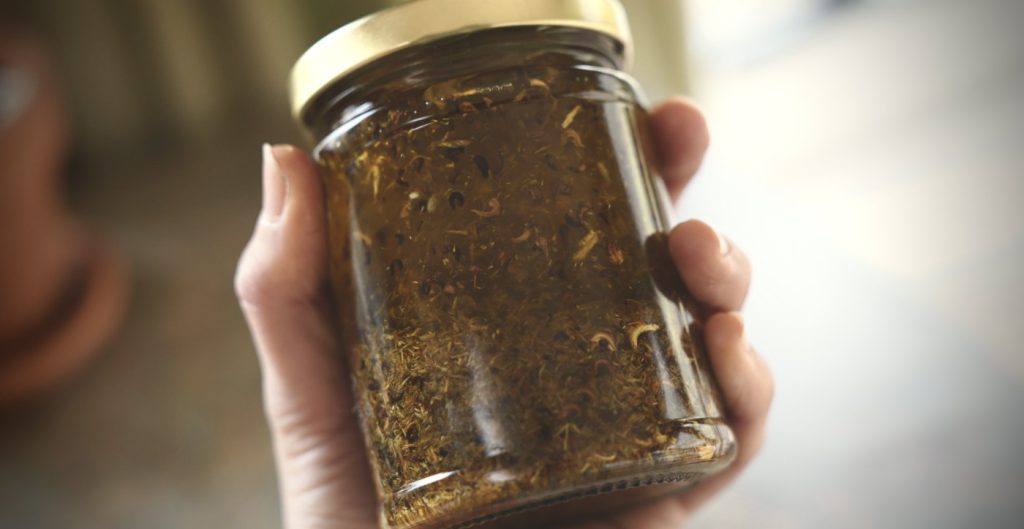
6. After 4 to 6 weeks, strain the herbs out of the oil using a muslin cloth. Make sure to really squeeze out as much of the oil as possible. The remaining plant residue can go on the compost.
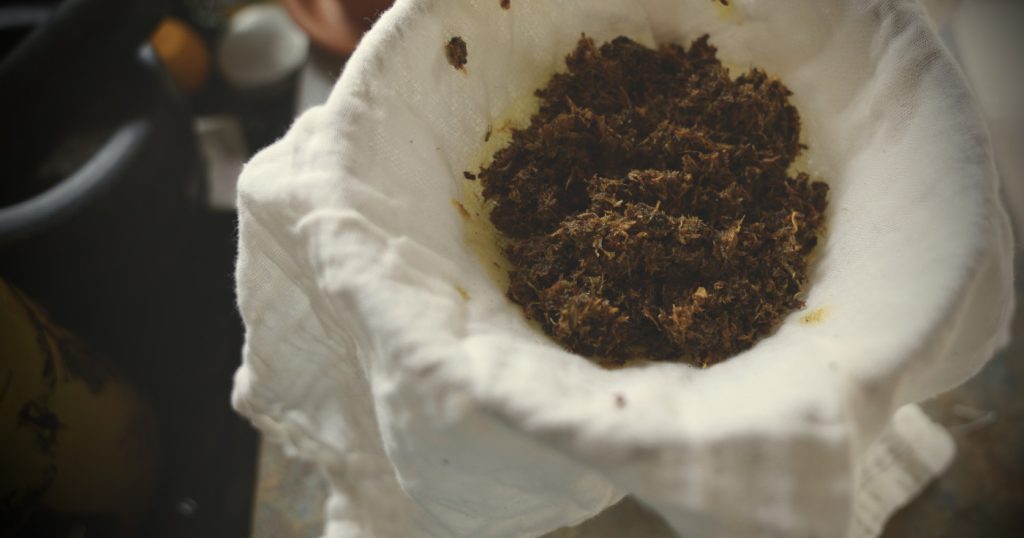
7. Pour your beautiful homemade herbal oil into a clean and sterilised glass jar or bottle and put a cute label on it with the date, type of oil, and herbs used. Store in a cool, dark and dry place and your oil will stay fresh for a year if not longer!
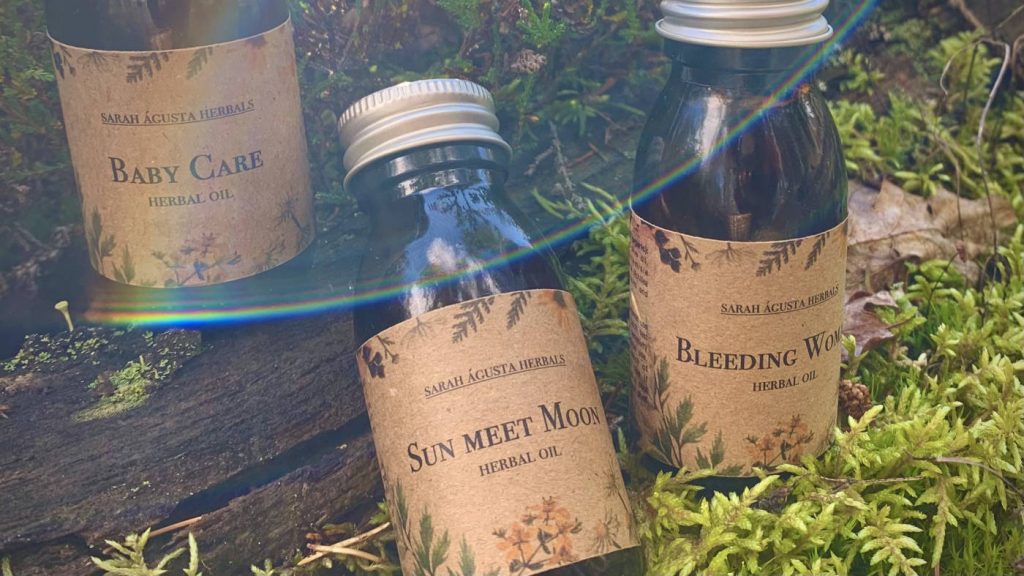
Learn to be creative with your herb-infused oils and you will soon be able to make the perfect oils for your needs and perhaps even turn them into salves and creams. As long as you know your herbs, their contraindications and how to use them safely the possibilities are endless. Below I’ve listed a few suggestions of how herb-infused oils can be used and some of the herbs I like to work with.
Herb-infused oil suggestions and their uses
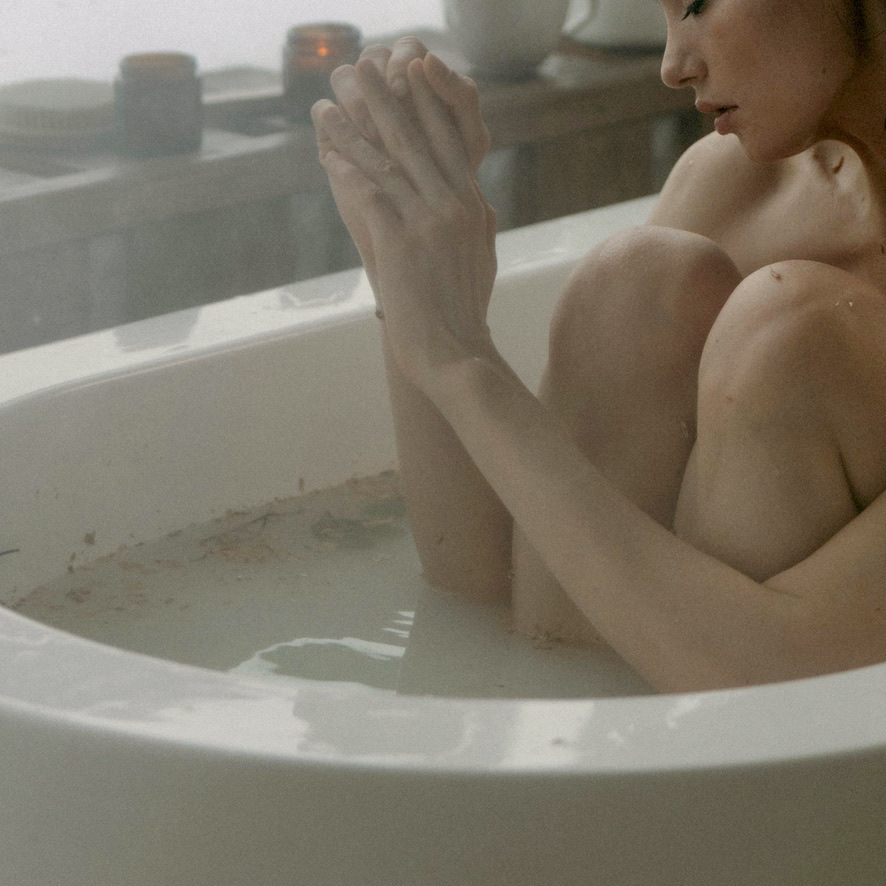
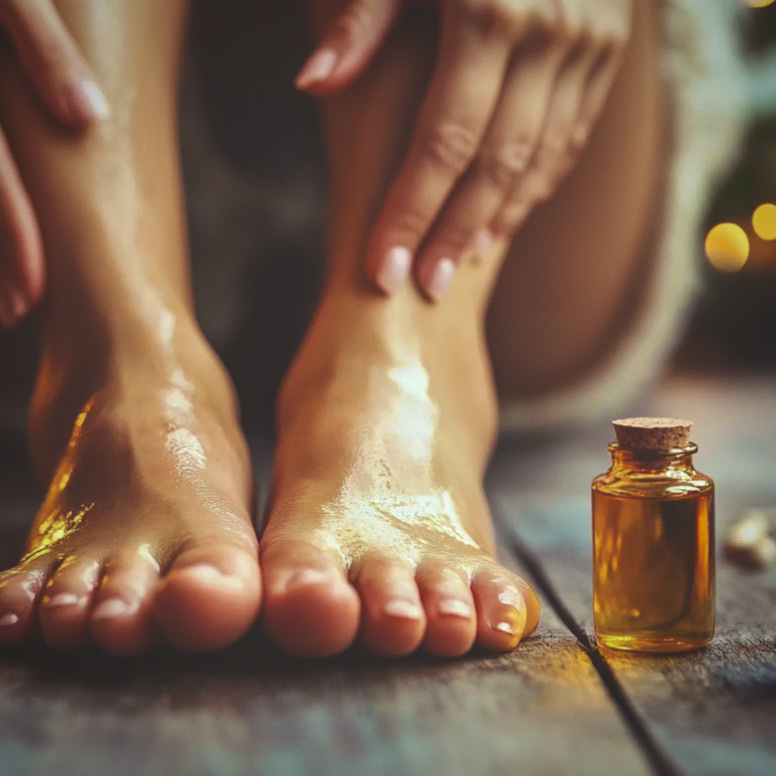
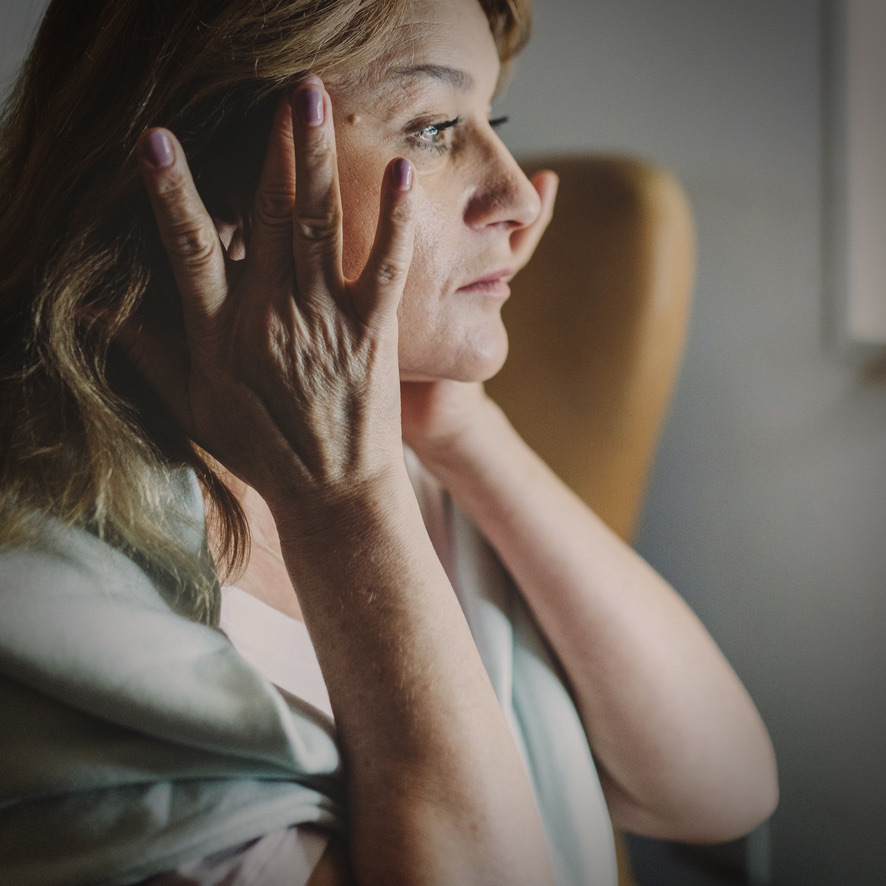
Make use of the benefits of your herbal oil and include it in your regular self-care and hygiene routine by adding it to your moisturiser or use it on its own in the form of body oiling. Drops of oil can be added to your bath when the body is sore or you need deep relaxation. Oils infused with herbs that work on the muscles, nerves, lymph and circulation are excellent added to a bath. Oil makes surfaces slippery, however, please keep this in mind and take care. When using herbal oil to soothe a sting or sore area massage with a lot of oil, almost bathe it in oil, and apply regularly. Below follows a list of herbal oil suggestions and their uses:
Muscle pain oil
with herbs such as St. John’s wort (flowers & leaves), Dandelion (flowers) and Arnica (flowers) is great for soothing sore muscles.
Circulation oil
with Pine (needles), Rosemary (leaves) and Dandelion (flowers) massaged into the whole body or cold hands and feet is wonderful during the cold season or for sedentary workers prone to poor blood circulation.
Lymph and breast oil
with Sweet violet (flowers and leaves), Calendula (flowers), and Red clover (flowers) massaged into the breast and other lymphatic areas including the neck, armpits and groin is a great way to avoid swollen lymph nodes.
Relaxation oil
with Chamomile (flowers), Lavender (flowers), Mugwort (leaves and flowers), and St. John’s wort (leaves and flowers) is wonderful for the depleted mind and body. Ears, temples and feet are areas highly receptive to massage and bring on instant relaxation.
Wound and bug bite healing oil
with vulnerary herbs such as Calendula (flowers), Yarrow (flowers & leaves) and Plantain (leaves) is good to have on hand to drench your already cleaned wound or itchy bite in.
Insect-repellent oil
with Yarrow (flowers & leaves), Lavender (flowers) and Catnip (leaves) massaged into exposed skin on summer evenings will keep the mosquitos away.
Perfect for the Beginner
Making herb-infused oils is fun and easy and serves many versatile uses. As long as you know your herbs, their contraindications and how to use them safely the possibilities are endless. A perfect craft for the beginner herbalist!
Love, Sarah Águsta


